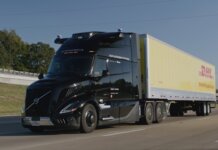The International Council on Clean Transportation (ICCT) has released a briefing outlining the consumer benefits of increased efficiency in 2025-2030 light-duty vehicles in the U.S.
As noted in the report introduction, U.S. regulatory agencies have been conducting a number of studies over the past two years as part of their midterm reviews of 2025 vehicle efficiency and emissions regulations. Some of these studies include the Draft Technology Assessment Report by the U.S. Environmental Protection Agency, the California Air Resources Board and the National Highway Traffic Safety Administration.
According to the ICCT, a critical question that comes from these regulatory analyses is
how attractive the efficiency technologies are from a consumer perspective.
Summarizing the impacts of emerging efficiency technology, including its effects on consumer fuel savings, benefit-to-cost ratio and payback period, the report concludes that 1) the adopted 2025 standards offer “tremendous value” for U.S. consumers; 2) fuel efficiency and CO2 standards are “an exemplary public policy, with benefits that consistently and greatly exceed costs”; and 3) high consumer benefits are available across vehicle types, ranging from cars to light trucks.
Under the adopted standards, buyers of model-year 2025 vehicles are expected to fully recoup their investment by the third year of ownership for a cash purchase. Those who finance their vehicles will see a net positive cashflow immediately, the report says. In addition, the standards will net consumers thousands over the lifetime of the vehicles.
Under reference fuel prices in coming years, consumer benefits would be more than
three times the costs of the standards. ICCT says fuel savings are 2.4 times the costs if fuel prices stay low for the next several decades.
According to ICCT, the consumer savings alone justify the efficiency standards – and add the public benefits of the standards for energy security, climate change mitigation, and air quality for “an even bigger public policy win.”
The report says that continuing these vehicle efficiency improvements to 2030 will continue to provide consumer benefits that exceed the costs by a factor of two to three times under reference fuel prices and a range of 1.4 to 4.4 times under low and high fuel prices, respectively.
As for vehicle types, the report says size-indexed standards allow all vehicle types to see more high-efficiency vehicle options over time.
“The average new car fuel economy label would increase from 35 mpg in 2021 to 41 mpg in 2025 under the adopted standards and to 52 mpg in 2030, assuming improvements of five percent per year – each of these steps would save consumers $2,300–$2,600 in fuel costs over the lifetime of the vehicle. For trucks, the average fuel economy would increase from 25 mpg in 2021, to 30 mpg in 2025, to 38 mpg in 2030; similarly, each step would save consumers $3,900–$4,000 in fuel costs per vehicle.”
Click here for the full briefing.






